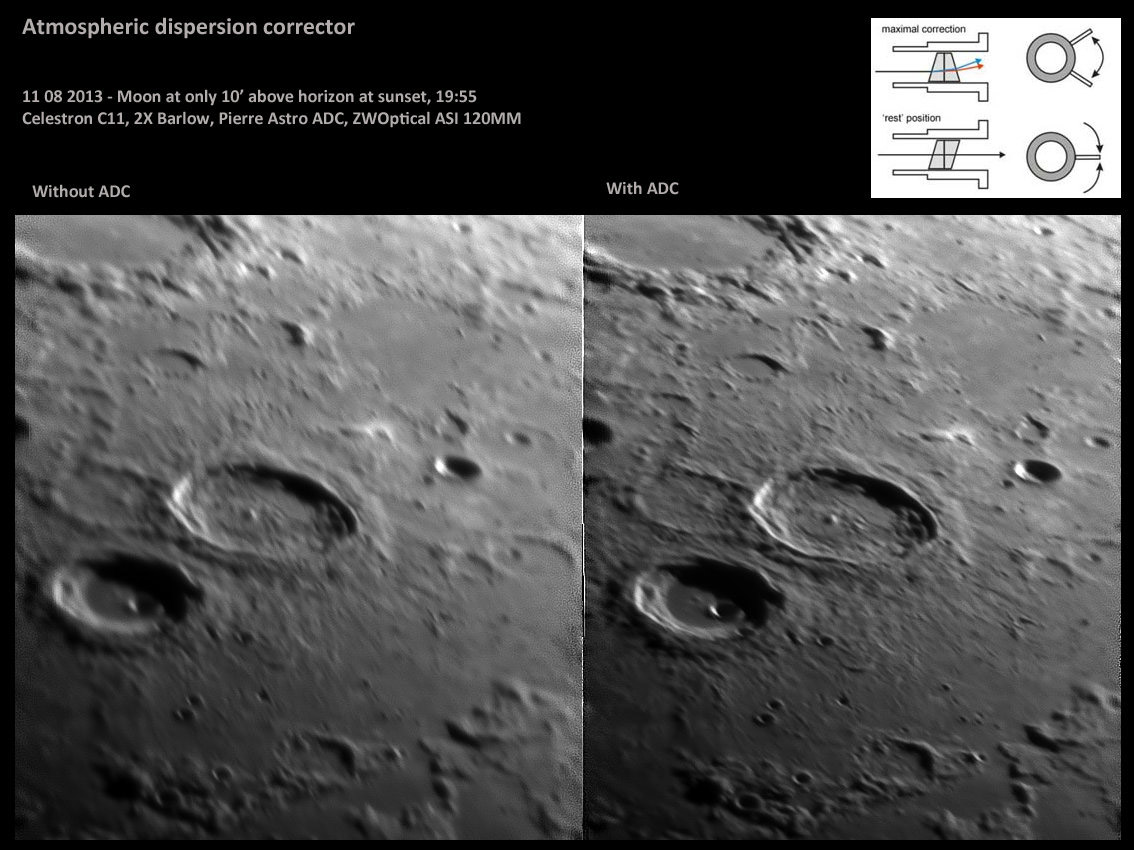August 28, 2023
Optical Magic
Originally published August 13, 2013

image by Gari Arrillaga, Salou, Spain
Over LPOD's 10 years there have been a small number of superb imagers who have not just luck, but the skill, equipment and technique to continually
produce outstanding lunar images. Based on the images that Leo Aerts of Belgium has submitted over the last 2 months I think he is in that pantheon of
great lunar imagers. In a recent LPOD he responded to my request to describe his equipment and technique so that others mght learn from his experience. One thing that struck me as being different from most imagers was the use of an atmospheric dispersion corrector (ADC). Gari also uses an SDC
and has sent a comparison of imaging close to the horizon with and without it. The difference is remarkable, transforming a poor image into quite a
respectable one. Gari's diagram at top right shows how the ADC works. It contains two counter-rotating prisms that are adjusted to reduce or eliminate the
red-blue edges often seen on bright objects. Gari uses an ADC sold by Pierro Astro, and Leo's ADC is from Astro Electronic. These ADCs may be
very useful for observers who live in high latitudes, where the Moon and planets are too often at low atlitudes. The ADC may also be a relatively easy way
to correct an otherwise good achromat marred by color fringes. And I really wish that Greenacre and Barr, who observed red "volcanic eruptions" at the
Cobra Head in 1963 with the Lowell 24" refractor at low elevation, had an ADC. (Although, perhaps it would correct away real color, too!)
Chuck Wood
Related Links
21st Century Atlas chart 9.
Yesterday's LPOD: Evidence
Tomorrow's LPOD: Rimae Fantasticus
COMMENTS?
Register, Log in, and join in the comments.



